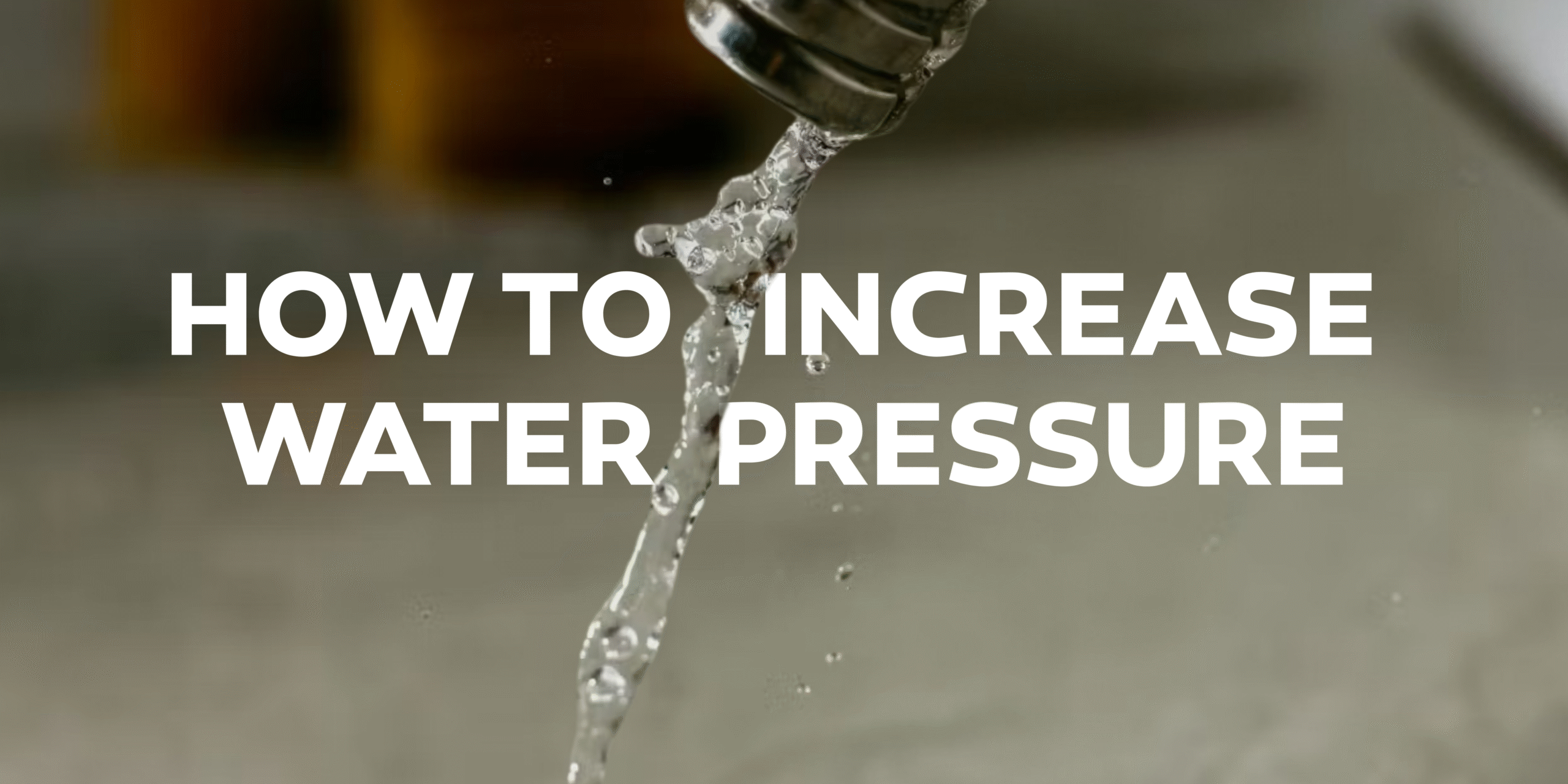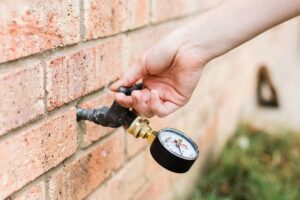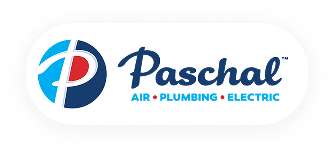
When your faucets and showers turn into dribbles instead of full streams, low water pressure is the culprit. Water pressure is measured in PSI (pounds per square inch). Most homes work best around 30–80 psi, though the EPA’s WaterSense program recommends a steady 45–60 psi for efficiency. Below about 30 psi is generally considered low and can make sinks and showers feel weak. This guide explains what affects home water pressure and walks through easy, step-by-step DIY water pressure fixes. We’ll define key plumbing terms (like pressure regulator, aerator, shut-off valve, and PSI) and show you when it’s time to call a plumber for low water pressure.
Understanding Water Pressure and PSI
Water pressure comes from the municipal supply or a well pushing water through your pipes. It’s measured in PSI (pounds per square inch), essentially the force pushing water through each square inch of pipe. If you test your outdoor faucet with a pressure gauge, aim for about 30–80 psi. The EPA notes that 45–60 psi is optimal, since pressures over 80 psi can stress the plumbing. Fluctuations happen (morning showers, neighbors using water, etc.), but consistently low reading usually means a problem at home.
Common Causes of Low Water Pressure
Before you start fixing things, identify the likely culprit. Low pressure often has simple causes:
- Clogged faucets or pipes: Mineral scale (especially from hard water) and debris can narrow your pipes or fixtures and slow flow. Kitchen and bath faucets have small aerators (screen inserts) that mix air into the water. These can clog with grit and restrict flow.
- Leaks in plumbing: Even a small hidden leak wastes water and drops pressure in the whole system. Check under sinks and around toilets for drips or damp spots.
- Partially closed valve: Your home’s main shut-off valve (often near the water meter) must be fully open. (Check out this blog for a how to: How to Find & Turn Off Your Home’s Water Shutoff Valve) If it’s only partly turned on, it will starve the house of water. Gate valves (wheel handles) should be turned fully counterclockwise, and ball valves should be pushed so the handle is parallel to the pipe.
- Faulty pressure regulator (PRV): Many homes have a pressure regulator (also called a pressure-reducing valve) on the main line. Its job is to keep incoming pressure at a safe level. If it’s set too low or broken, it will limit flow. A PRV is typically a dome-shaped valve near the shut-off. It has an adjustment screw on top – turning this clockwise usually increases pressure.
- Municipal supply issues: Rarely, the problem isn’t in your house at all. City maintenance, hydrant use, or a pump failure can lower pressure temporarily. Check neighbors’ flow to rule this out.
Key Plumbing Terms Explained
- PSI (pounds per square inch): Unit of pressure. As noted, home plumbing is best at ~50 psi on average.
- Main Shut-Off Valve: The lever or wheel where water enters your home (often by the meter). Turning it on or off controls all water to the house. Always make sure it’s completely open when testing or troubleshooting pressure.
- Pressure Regulator (PRV): A valve that controls the water pressure coming in. It protects pipes from excessive pressure. If you have one, it’s just past the main shut-off. Adjusting its screw changes pressure (CW = up, CCW = down). If the PRV is stuck or failing, a plumber can replace it.
- Aerator: The tiny mesh screen at the tip of faucets. It mixes air with water for a smooth flow. Aerators save water but can clog. Cleaning them regularly (soaking in vinegar to dissolve mineral scale) can instantly boost flow.
- Flow Restrictor: Some faucets also have a built-in restrictor disk to limit gallons per minute. Removing a restrictor can increase flow – but check local codes and be aware it ups water use.
DIY Fixes to Boost Water Pressure

Here are practical steps you can take at home:
- Open the Main Valve Fully: First, locate your main shut-off (by the meter or where the supply enters). Make sure it’s completely open. A partially closed valve is a surprisingly common culprit for weak flow.
- Clean Faucet Aerators and Showerheads: Unscrew the aerator screens from each faucet and showerhead. Mineral buildup can block the holes. Soak these parts in white vinegar (a few hours or overnight) to dissolve the scale. After soaking, gently scrub and rinse before screwing them back on. Clean aerators can dramatically improve flow.
- Look for Leaks: While testing pressure, inspect visible pipes for drips or moisture. Even a small leak can drop pressure (and wastewater). Fix any leaky joints or valves you can. If you find a significant leak or corroded pipe, it’s safe to call a plumber.
- Clear Pipe Clogs: For deeper clogs, you might try running a stiff brush down the faucet pipes (after shutting off water) or using a safe pipe-cleaning solution. Persistent clogs in the main lines often need professional jetting or repiping. Signs of serious buildup include rusty or discolored water.
After each fix, retest the faucet or shower. If pressure improves, you’ve likely solved it. If not, move on to the next step or consider calling an expert. (For more, check out this blog post about what to check when you are experiencing low water pressure in your home: Click here)
When to Call a Professional
If DIY steps don’t restore normal flow, it’s time for a plumber. Call a plumber for low water pressure if:
- Multiple fixtures are affected. If several sinks or showers are weak at once, the issue is likely in your main line or regulator.
- You can’t identify the cause. After basic checks, if you still don’t know why pressure is low, a plumber can do a full inspection.
- Sudden or widespread pressure drop. A sharp drop in many fixtures or sudden pressure loss could signal a serious issue.
- Older or corroded pipes. Homes with old galvanized or iron pipes often see pressure loss as pipes rust from the inside.
- Pressure regulator needs replacement. Adjusting a PRV only helps if it works properly. If your regulator is cracked, seized, or absent, a plumber can install or replace it.
A licensed plumber has the expertise and equipment to fix big problems safely, including adding a booster pump, replacing pipes, or adjusting high-pressure systems.
You can contact Paschal Plumbing for professional service. Their team can diagnose and fix low-pressure issues, from clogged mains to bad regulators.
Take Control of Your Water Pressure
Low water pressure can be annoying, but often the solution is simple. Try the DIY fixes above first: open valves fully, clean aerators, flush your heater, and adjust your regulator. These DIY water pressure fixes solve most problems.
If pressure is still low or you suspect a hidden issue, get professional help. Boosting your home’s water flow will make showers, laundry, and chores easier every day.
Ready for stronger water flow? For an expert plumbing service, visit Paschal Plumbing’s services page and let the pros restore your water pressure quickly and safely.


